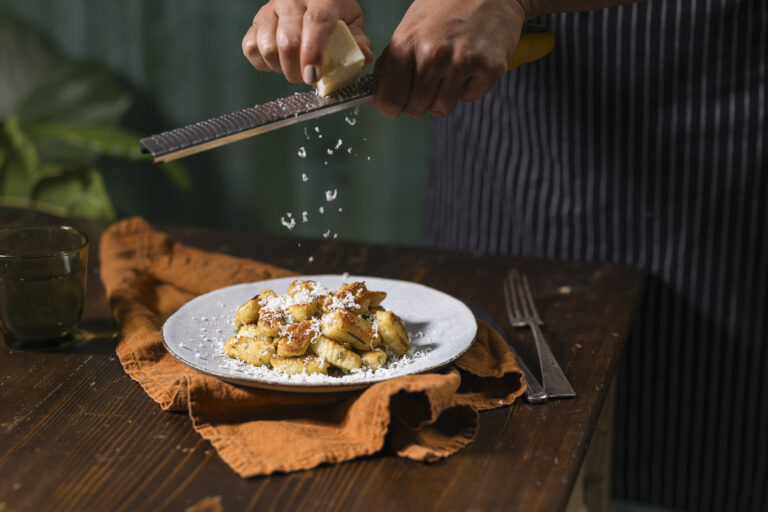Ever wondered how to store cheese? These tips will help maintain your cheese quality and safety.
While everyone knows that cheese needs to be refrigerated, not a lot know that the storage conditions can vary depending on the cheese. Read on to find out how to best store cheese.
In the fridge
To preserve freshness, plastic wrap is the most versatile and accessible option. It also provides the tightest seal to protect cheese from moisture, odours and possibly mould in the fridge.
As a rule, make sure that the wrapping adheres well to the cheese to avoid drying out. Store your cheeses in the lower shelf of your refrigerator, far from foods with strong odours, to avoid absorption of unwanted tastes and smells. Your refrigerator’s vegetable drawer will make a good storage place.
Store bocconcini and feta in the brine it was sold in, or in lightly salted water. Be sure to always respect the “best before” date.
Read more about Keeping Cheese Fresh.
In the freezer
You can freeze cheeses, in pieces of 500 g (1/2 pound) or less, for up to two months. Make sure they are carefully wrapped in plastic wrap and place them in an airtight freezer bag.
As with all types of cheeses, it is important to cool before freezing, and to allow the cheese to thaw in the refrigerator, so it can regain the humidity lost during freezing.
Since freezing can affect cheese texture and character, it is best to use thawed cheeses for cooking rather than tasting. Cooking with previously frozen cheeses won’t affect the texture or taste of the meal.
Read more about Freezing Cheese.
Shelf life
While you should always respect the “best before” date, here are a few basic guidelines to keep in mind once you’ve opened your cheeses:
- Fresh cheese: a few days to 2 weeks or more
- Soft cheese: 2 weeks in plastic wrap
- Semi-soft cheese: 2-4 weeks
- Firm cheese: 5 weeks to a few months
- Hard cheese: over one year if stored properly (make sure you change the wrapping regularly because these cheeses can absorb the strong odours of certain vegetables)
Canadian light cheeses have a higher moisture content, and as a result a shorter shelf life, depending on the cheese. Check the “best before” date on the packaging and monitor light cheeses more closely.
What to do about mould?
Sometimes, little whitish spots appear on the cheese, signalling the onset of mould. If the cheese is firm, semi-soft or hard, you can eat the cheese, as long as you cut away the affected part. Remove at least 1/4-inch of the mouldy cheese, then wrap the remaining cheese in plastic wrap. However, if the rind is dry and yellowed and smells like ammonia, you should discard the cheese. If the cheese is soft or fresh and shows signs of mould, you should throw it out.
Looking for cheese platter suggestions? Check our Hosting a Party article.



